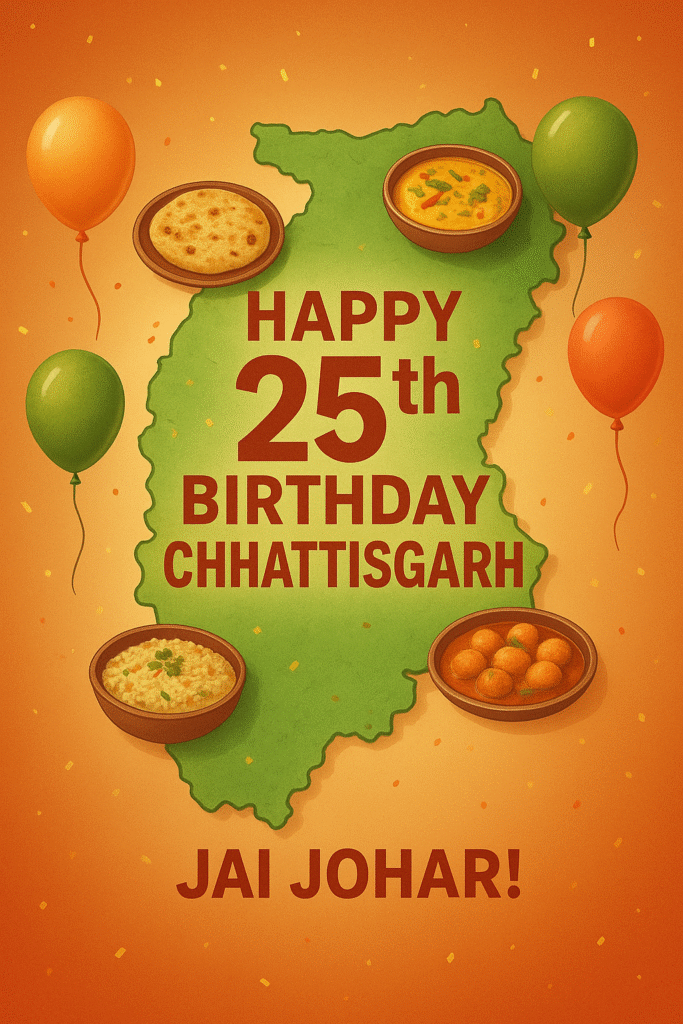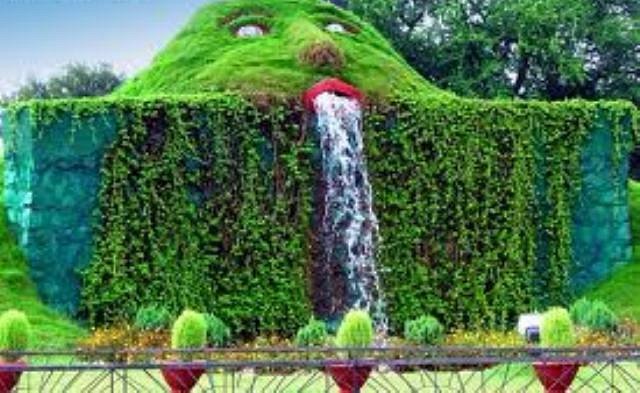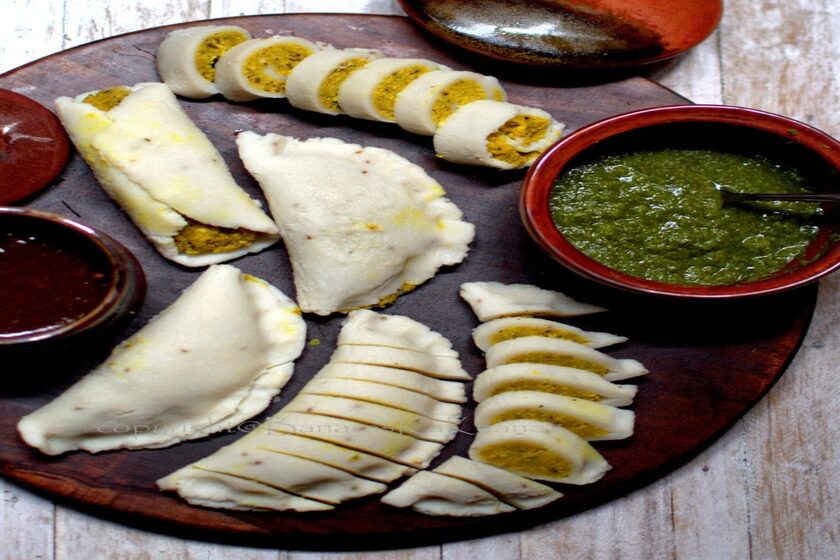On the state’s silver jubilee, one of its daughters, asks: Why does the world know our coal but not our chilla or bara, our conflicts but not our culture?



Today, as Prime Minister Narendra Modi inaugurates the Shaheed Veer Narayan Singh Memorial and Tribal Freedom Fighters Museum in Raipur .India’s first fully digital museum, built at a cost of ₹50 crore something stirs deep within me. A wave of nostalgia washes over, taking me back to that November day in 2000, when as students in Bhopal, we witnessed the birth of a dream.
I can still hear echoes of Balkavi Bairagi’s voice resonating through the Lok Sabha chambers, his words painting visions of a new dawn. On November 1, 2000, when Chhattisgarh was carved out of Madhya Pradesh as India’s 26th state , we young students didn’t just witness history,we believed we were standing at the threshold of transformation. The elders around us spoke with such certainty, such assurance: “Complete your studies and return. The new state will need you. There will be opportunities everywhere.”
But the road from promise to reality is rarely straight. When I finished my studies, those imagined opportunities remained just that imaginations. The jobs that materialized were either non-existent or unworkable. Like many others, I found myself in Delhi, carrying Chhattisgarh not in my hands but in my heart. And that’s when the real pain began.
“Chhattisgarh? You mean Jharkhand?”
Even after 25 years, this confusion persists. People’s geographical amnesia about my beloved state used to infuriate me. Yes, I give credit to recent governments at least now people have heard of Bastar and Raipur. But is Chhattisgarh just these places? Is our identity limited to what makes headlines?
Why does Chhattisgarhi culture struggle to transcend our borders? Why do our stories, our songs, our soul remain confined within our boundaries?
My love for Chhattisgarh has become a pilgrimage. I’ve made it a point to return at least once a year, each visit revealing a double-edged truth: the infrastructure gleams brighter with each passing year, but our cultural bonds—especially among the youth seem to fray. The concrete rises while the roots shallow.
The tribal museum will showcase the life of tribal people, their stories of glory, using artificial intelligence and cutting-edge technology a step toward visibility, toward validation. But Raipur alone cannot carry this burden. Delhi should taste Chhattisgarh through its authentically desi flavors. If momos from Tibet and litti chokha from Bihar can find their place in Delhi’s heart and lanes, why should chawal chila, fara, dal bara, and laal bhaaji remain strangers to the capital?
Think of bafauri, muthia, aamat, bore baasi, angakar roti, chousela roti each dish telling a story of our rice-bowl heritage. Consider tilgur, dubki kadi, poha, rakhia badi sweets and savories that deserve their moment in the culinary spotlight. Basi roti, ghughra, khandvi these aren’t just foods; they’re edible memories of our grandmothers’ kitchens.
We need more gadh kaleva eateries outside the state and make it trendy in the world of social media. Let Instagram discover our cuisine. Let food bloggers fall in love with our flavors. Let the world know that Chhattisgarh’s culinary heritage is as rich and diverse as any other state in India.
When people roll their eyes and say, “Nothing special in Chhattisgarhi dishes,” I know they’re speaking from ignorance, not experience. We have a treasure trove of food items, dance forms, songs, and paintings that the world has never been allowed to discover. Not because they lack merit, but because we’ve failed to share them with pride.
Beyond Coal, COSA, and Naxalism: The Real Chhattisgarh Awaits
For too long, Chhattisgarh has been defined by its challenges and resources coal, Kosa , and Naxalism. But there is a Chhattisgarh that exists beyond these labels, a land of breathtaking natural beauty and profound historical significance that deserves to be discovered.
Come, visit Chitrakote Falls the “Niagara Falls of India”cascading 30 meters high and 300 meters wide , where the Indravati River creates a horseshoe-shaped spectacle during monsoons. Stand before Tirathgarh Waterfall, plunging 91 meters , splitting into multiple cascades that create a mesmerizing landscape of mist and thunder.
Explore Kanger Valley National Park, one of the densest national parks in India home to the Bastar Hill Myna, our state bird. Venture into Kailash and Kutumsar Caves he world’s second-longest natural limestone caves , where stalactites and stalagmites form natural Shivlingas, and 150 ponds surround ancient temples .
Journey to Mainpat, Chhattisgarh’s hill resort , with its beautiful hills, waterfalls, verdant valleys, and Tibetan settlements. Discover Guru Ghasidas National Park, sprawling across 1440.71 square kilometers , protecting our unique biodiversity.
But nature is only half the story. Sirpur, on the banks of the Mahanadi River, was once a thriving Buddhist center from the 5th century AD . Visit the Laxman Temple with its exquisite carvings depicting scenes from the Ramayana , explore ancient Buddhist monasteries, stupas, and viharas that transport you to Buddhism’s golden era in our land.
Stand in awe before Bhoramdeo Temple the “Khajuraho of Chhattisgarh”with its intricate carvings and erotic sculptures , built between the 7th and 12th centuries. Mahamaya Temple in Ratanpur, one of the 52 Shakti Peethas of India , draws hundreds of thousands during Navratri.
Walk through Malhar, dating back to the 1st century , with ruins of temples and sculptures offering a peek into early urban life. Explore Rajim the “Prayag of Chhattisgarh”at the confluence of the Mahanadi, Pairi, and Sondur rivers ,where the annual Kumbh Mela attracts thousands.
Visit Bastar Palace in Jagdalpur, showcasing exquisite art and architecture with impressive carvings and engravings that tell stories of royal grandeur and heroism.
This is the Chhattisgarh that needs to be known not as a region of conflict and extraction, but as a land of waterfalls and caves, of ancient temples and Buddhist heritage, of tribal wisdom and natural splendor.
The museum opening is symbolic. It acknowledges our tribal heroesVeer Narayan Singh who was hanged in Raipur in 1857, Queen Jugraj Kunwar of Bastar, Veer Gundadhur who led the Bhumkal Rebellion of 1910 warriors whose sacrifices deserve not just digital immortalization but living, breathing cultural continuity.
On this 25th anniversary, my plea is simple but urgent: Chhattisgarhi youth must know their cultural roots and take pride in being Chhattisgarhi. We need theatre based on our stories, platforms for our dance forms, celebrations of our tribal festivals that go beyond tokenism. We need to make Chhattisgarh popular not just as a destination on a map, but as a living, vibrant culture in the consciousness of India.
Our people are already tagged “sable badhiya” means ‘the best’. Now let’s ensure that “the best” includes preserving and propagating the very culture that defines us. Let the world see us not through the lens of coal mines and conflict zones, but through the cascading beauty of our waterfalls, the ancient wisdom of our temples, and the authentic flavors of our kitchens.
Happy 25th, my dear Chhattisgarh. May the next 25 years witness not just infrastructural growth, but a cultural renaissance that makes every Chhattisgarhi youth whether in Raipur or Delhi, in Bastar or Bengaluru carry their identity not as a burden of explanation, but as a badge of pride.
Jai Johar!


